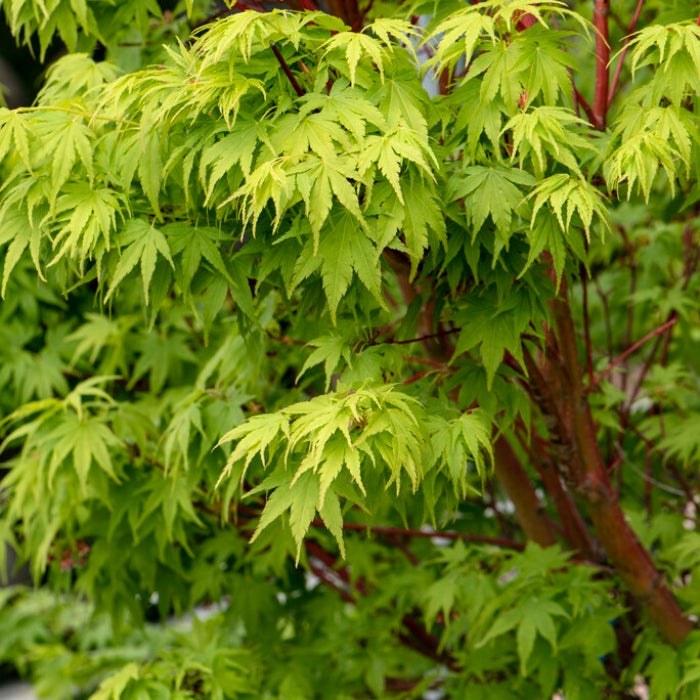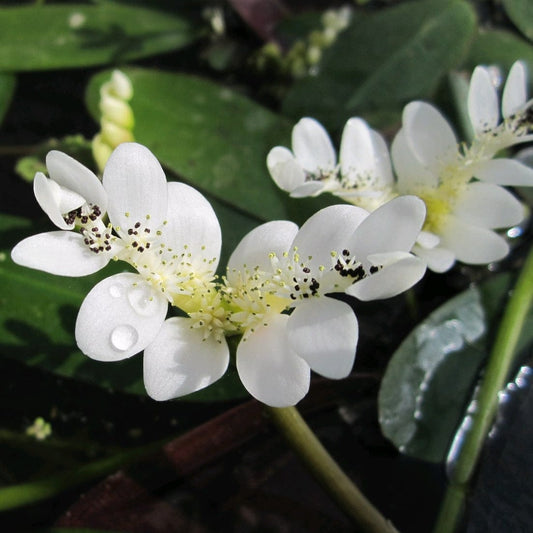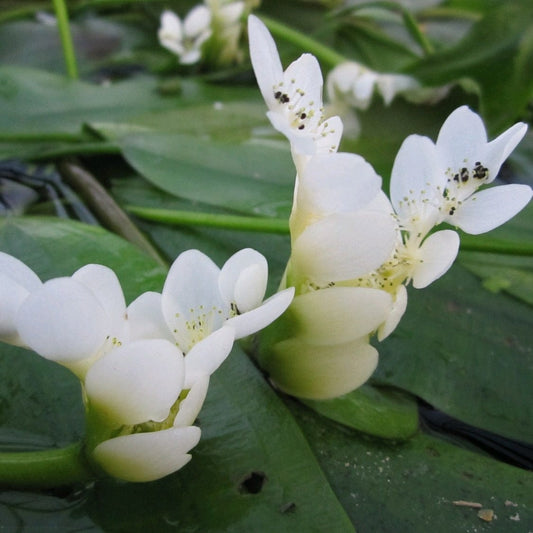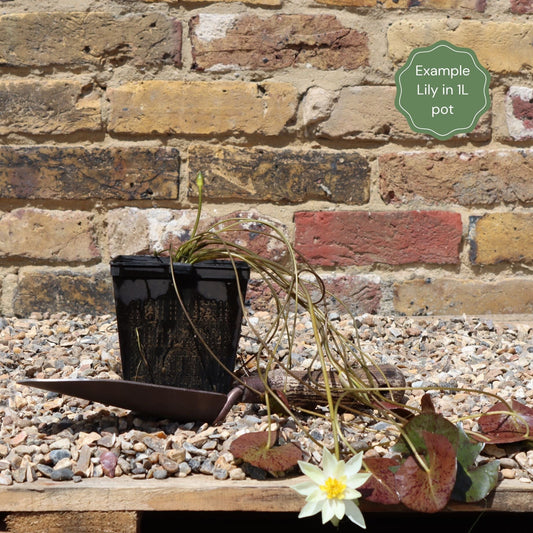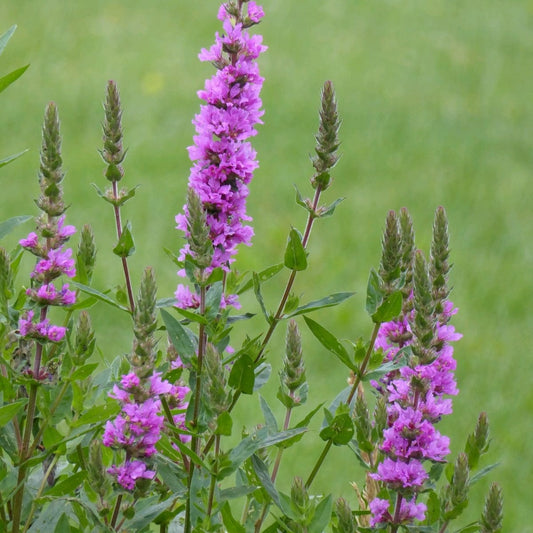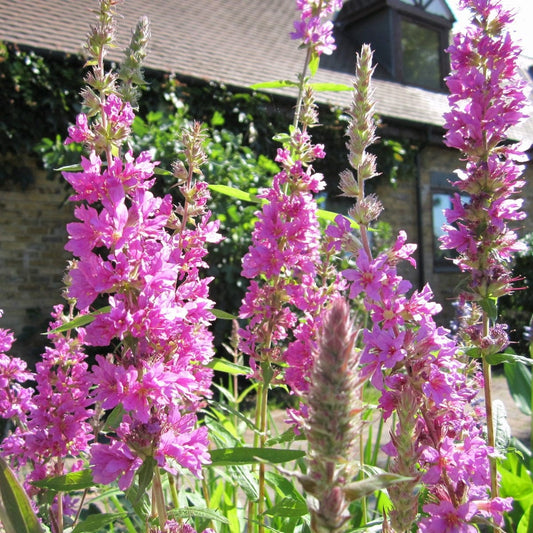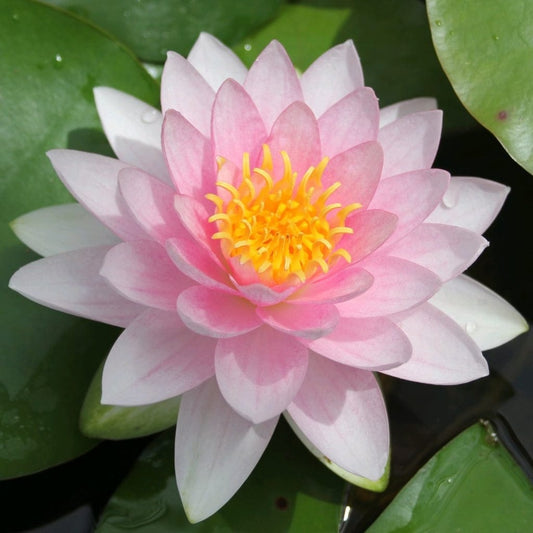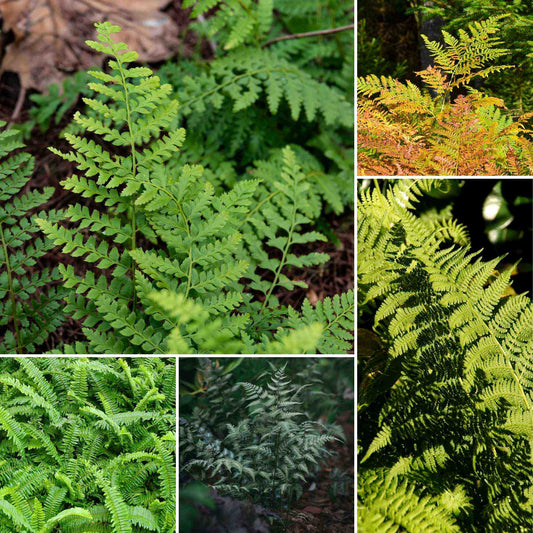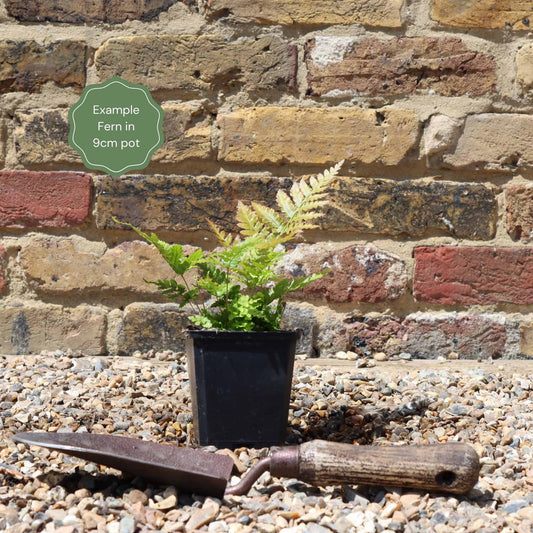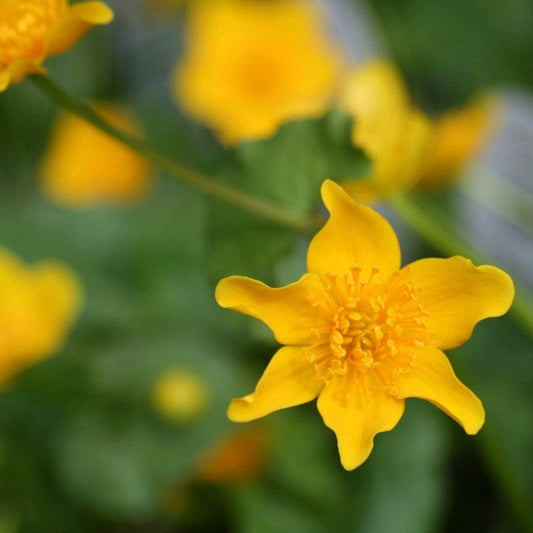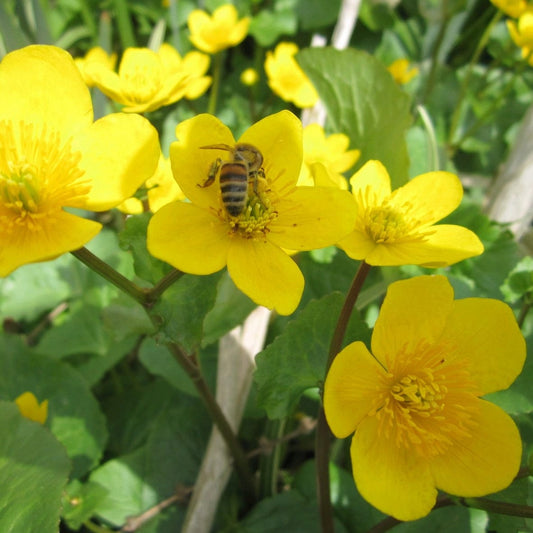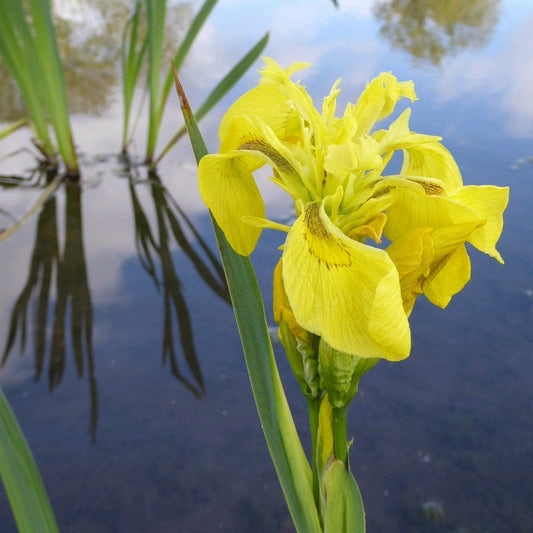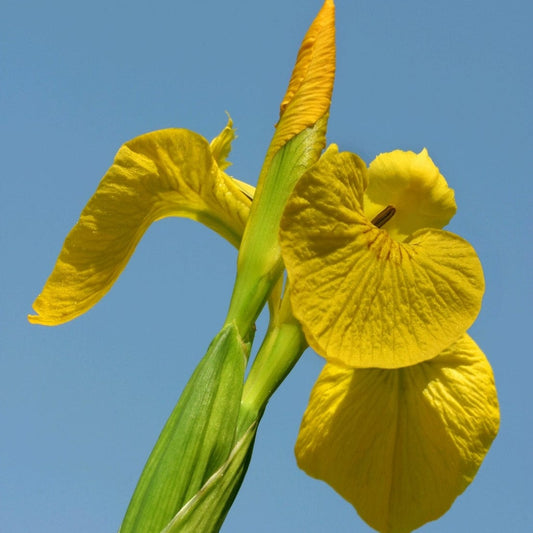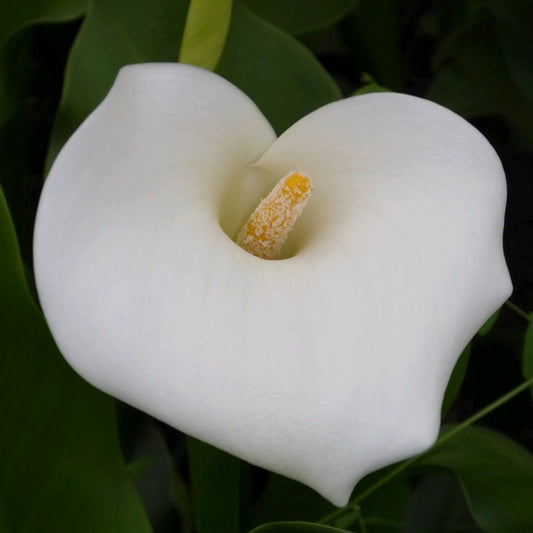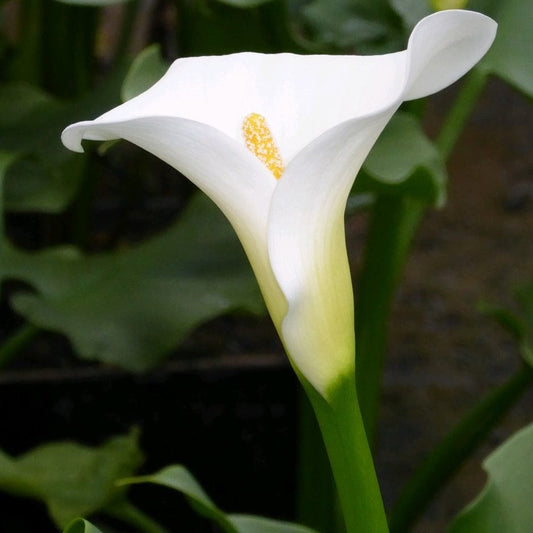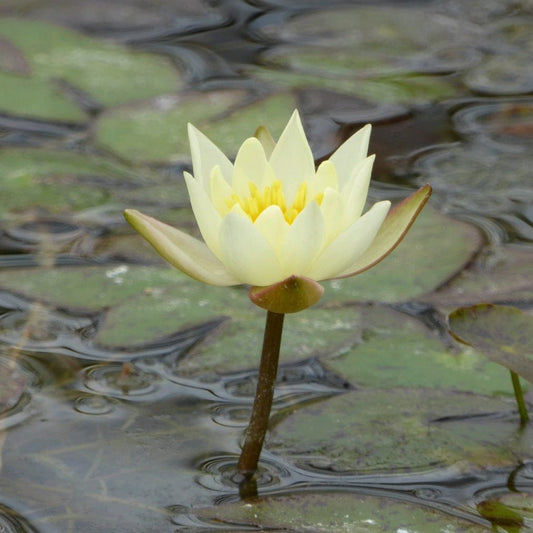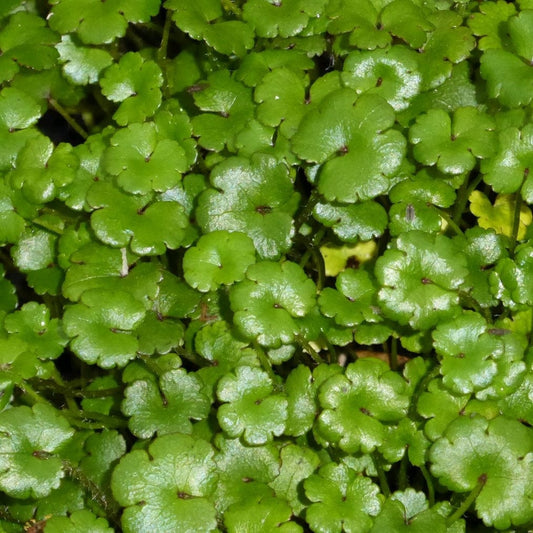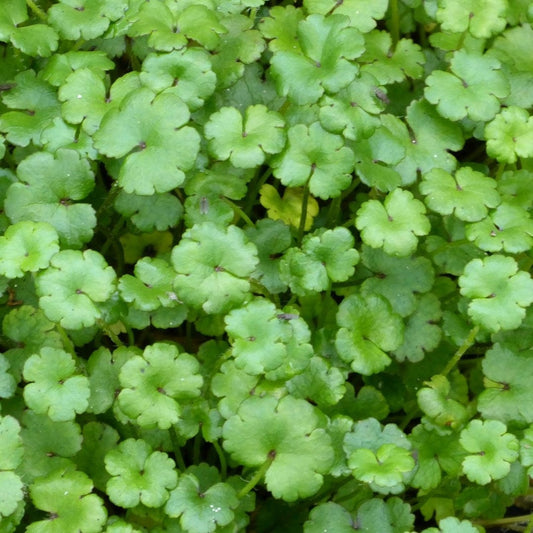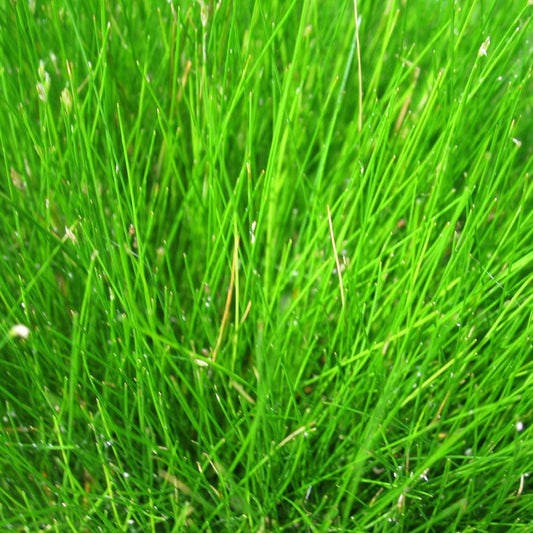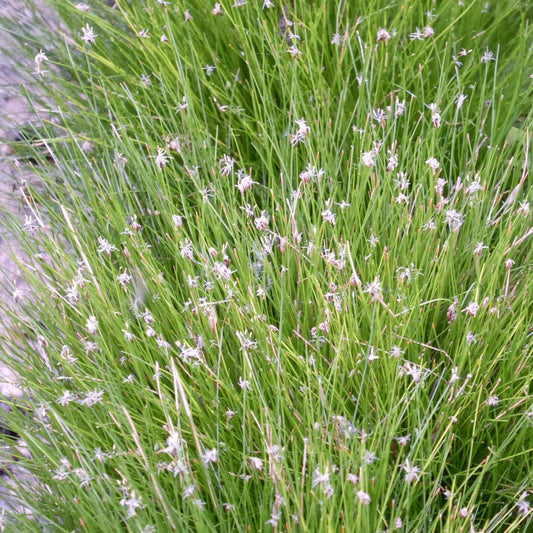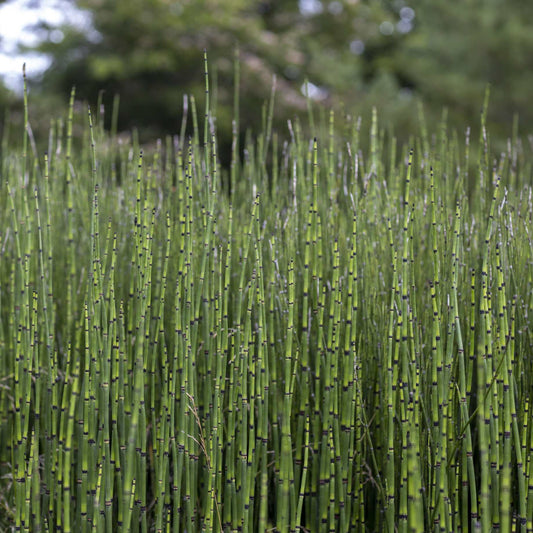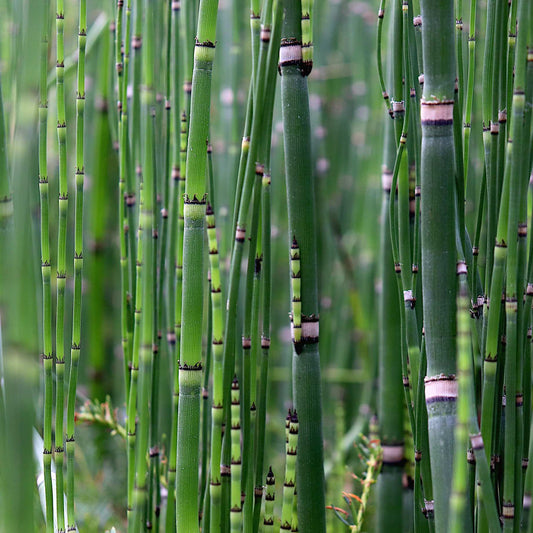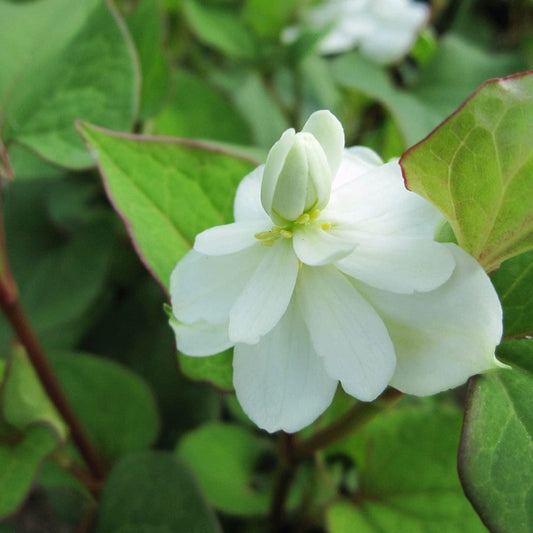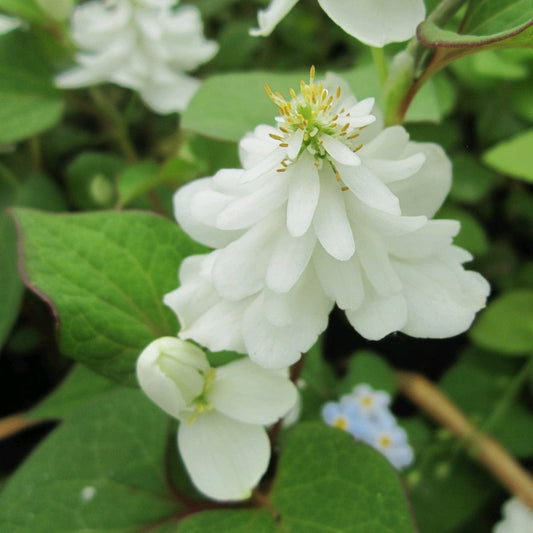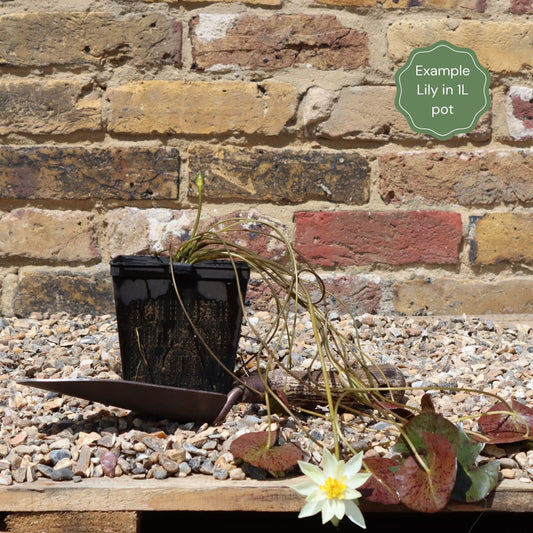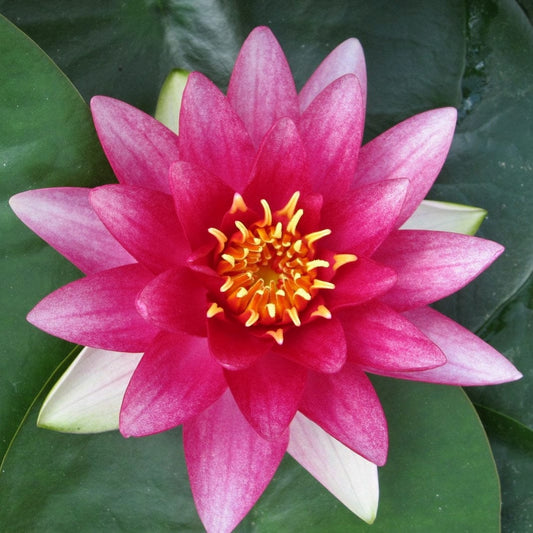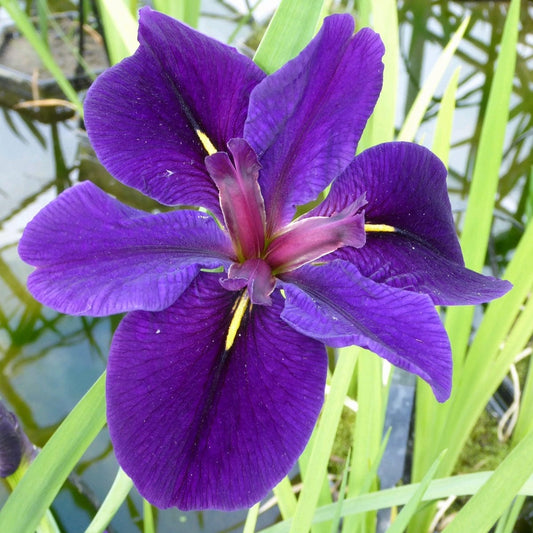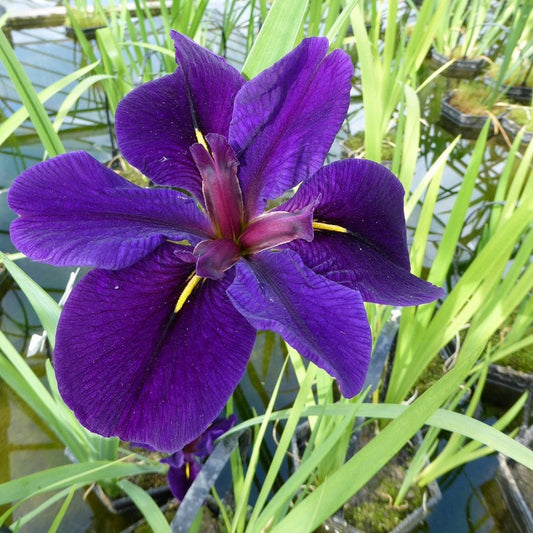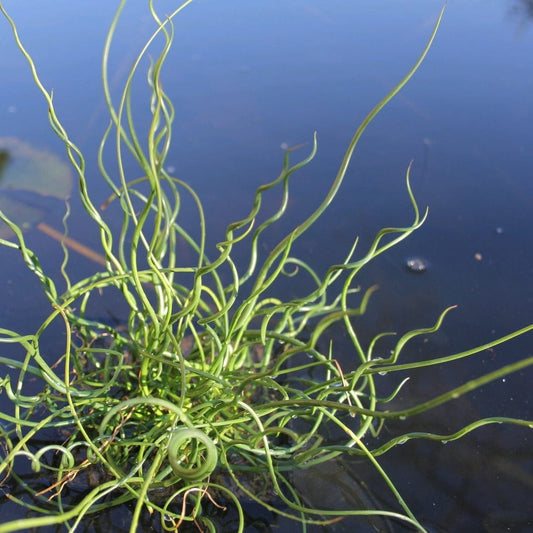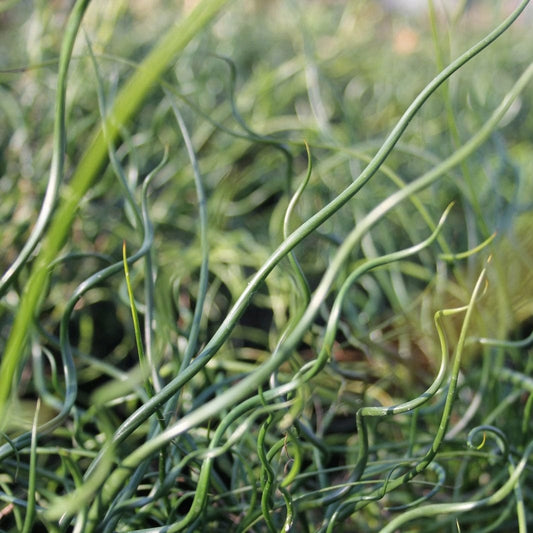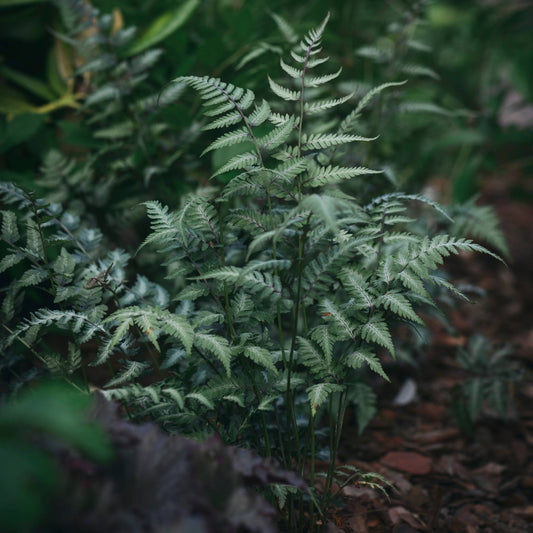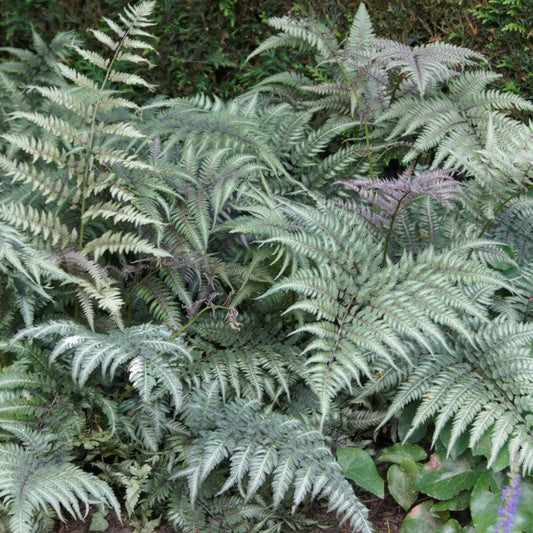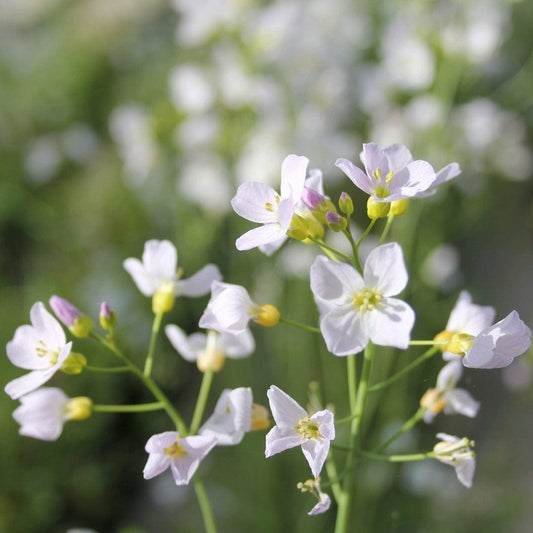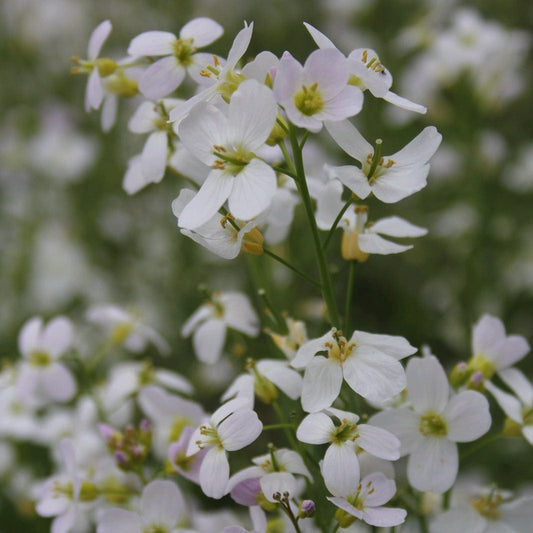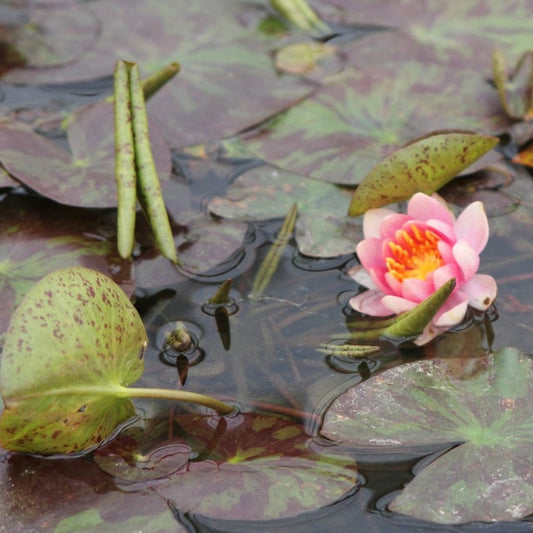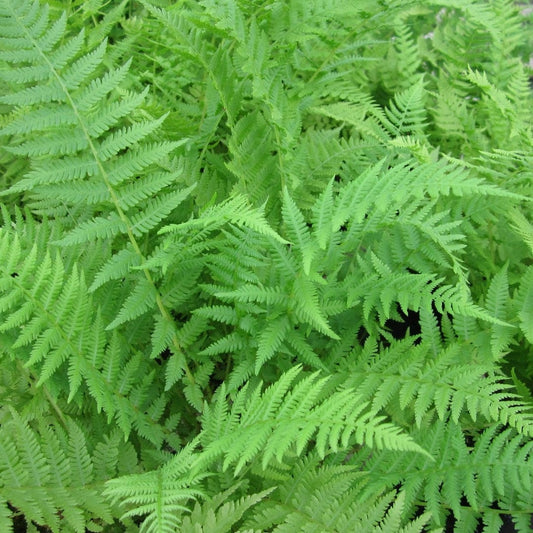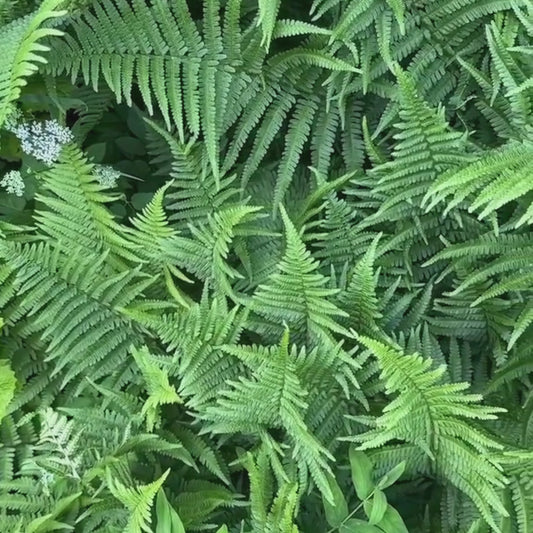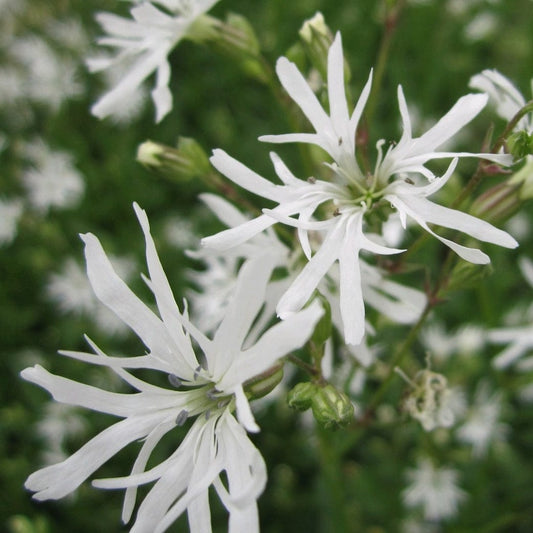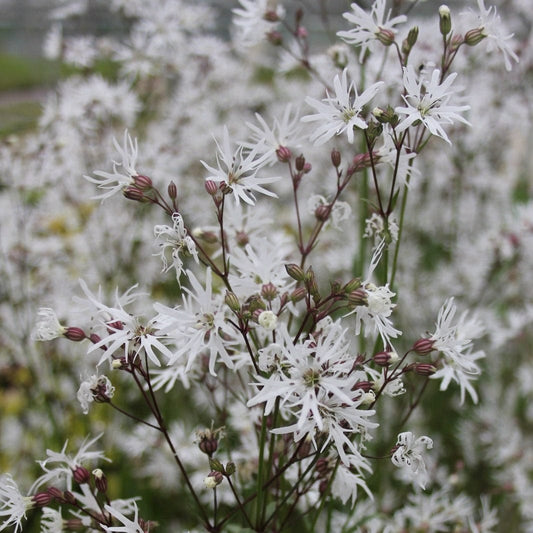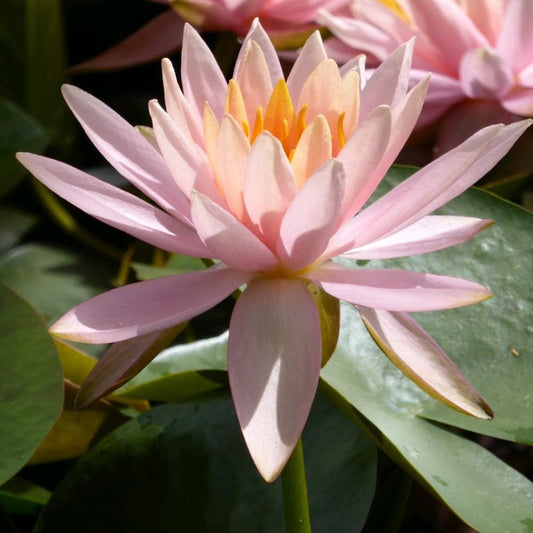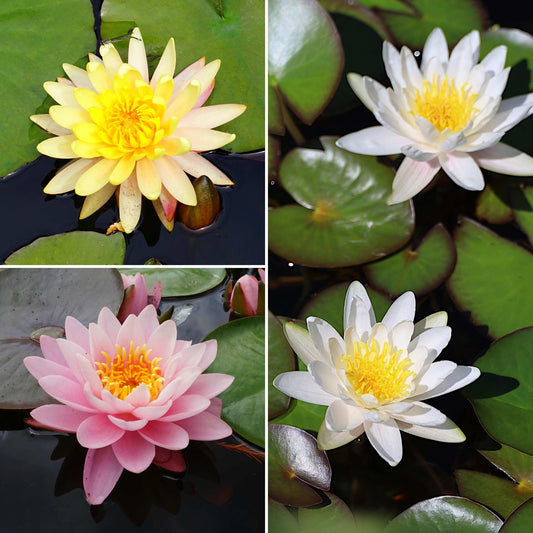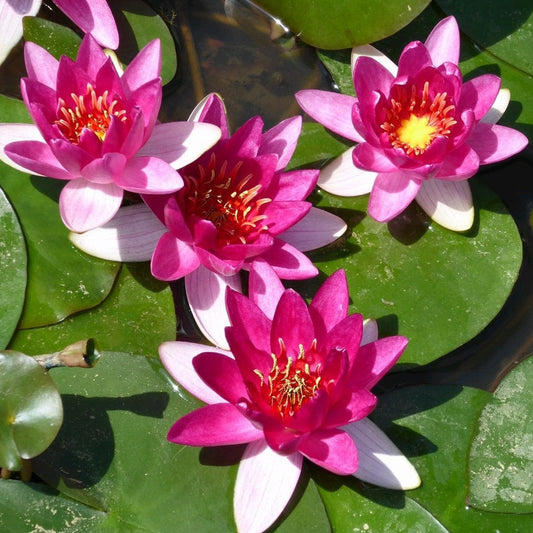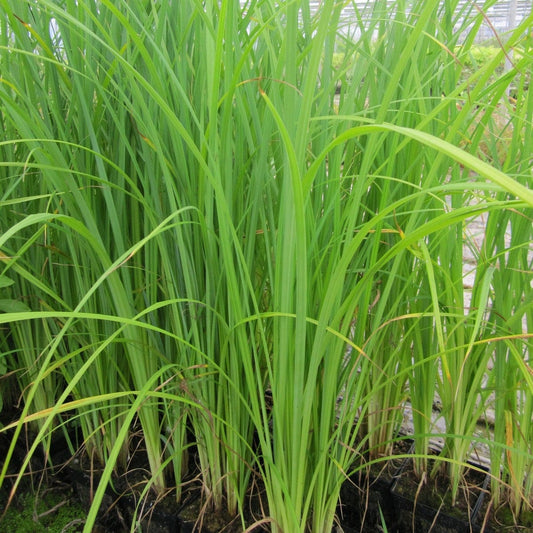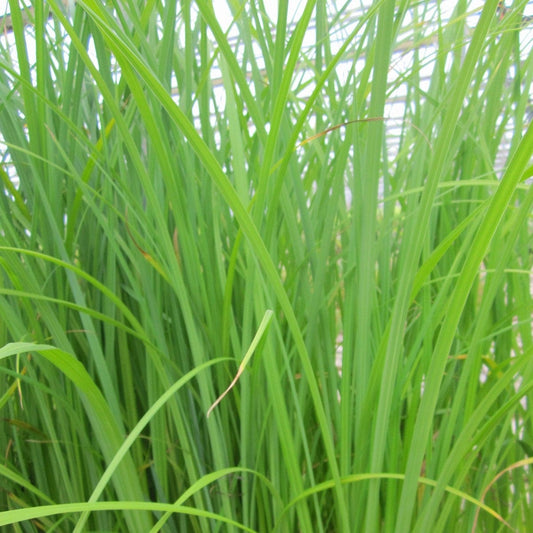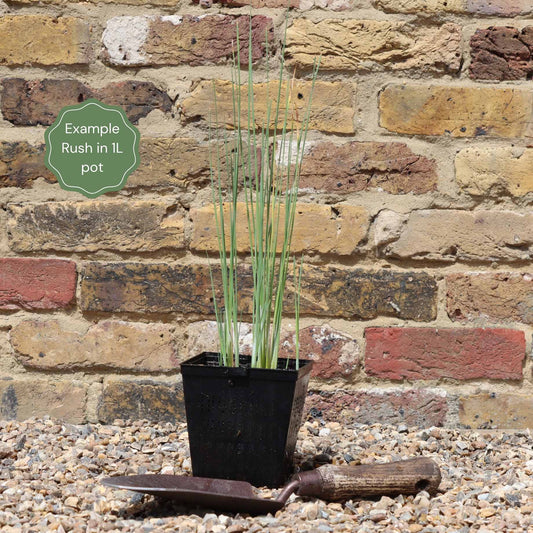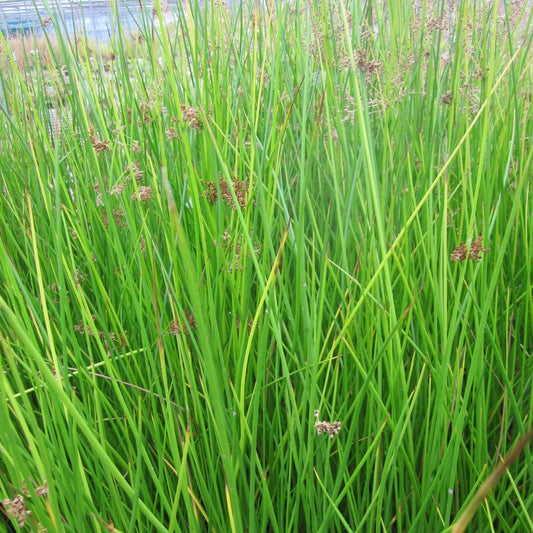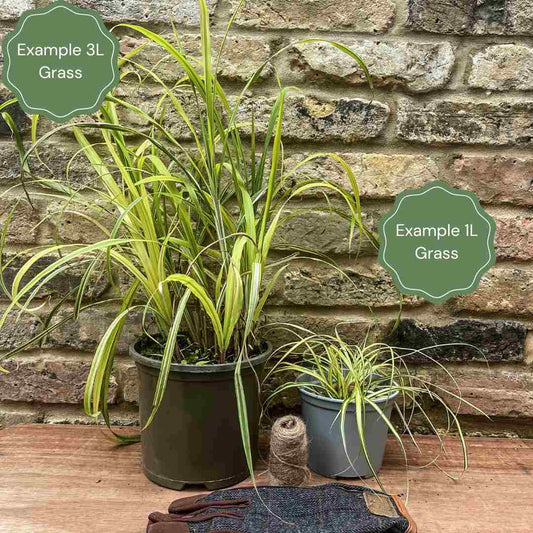Collection: Pond Plants
Pond plants are vital for maintaining a stable and healthy pond, preventing the build-up of green algae as well as sheltering wildlife. Our aquatic plants cover all pond planting zones from damp ground to marginal, deep water and floating. Choose from our selection of plants sourced from an RHS-award-winning, British aquatic pond plant grower, delivered in premium-quality aquatic pots. Not sure what pond plant is best for you? Don't worry, browse our seasonally selected pond plant collections and you'll find something that's right for you.
Need help picking?-
Regular price From £18Regular price Sale price From £18
Water Hawthorn | Aponogeton distachyos
The most sumptuous scent
- Floating white, vanilla-scented blooms
- Zone 3 - Deep water
- Grow in full sun or partial shade
- Flowers from March to May (and in autumn)
5 options available
-
Regular price From £25Regular price Sale price From £25
White Water Lily | Nymphaea 'Alba'
Britain's only native water lily
- Gorgeous stellate, white blooms
- Zone 3 - Deep water
- Thrives in full sun
- Vigorous grower and subtly-scented blooms
5 options available
-
Regular price From £23Regular price Sale price From £23
Purple Loosestrife | Lythrum salicaria
Transforms any dull space!
- Towering flower spikes in rich purple hues
- Zone 2 - Pond edges
- Grows best in full sun
- Flowers from July to September
2 options available
-
Regular price From £25Regular price Sale price From £25
Long Flowering Water Lily | Nymphaea hollandia 'Darwin'
Amongst the finest water lilies
- The softest pink double blooms
- Zone 3 - Deep water
- Likes a spot in full sunshine
- Stunning flowers suited to larger ponds
5 options available
-
Regular price £45Regular price Sale price £45
Premium Fern Collection
The perfect mix of stylish ferns
- An array of wonderfully-textured foliage
- Zone 1 - Pondside
- Grows in all light (part shade is best)
- Ideal for damp ground and shady borders
1 option available
-
Regular price From £30Regular price Sale price From £30
Marsh Marigold
Some of the daintiest flowers
- Heart-shaped leaves, loved by bees!
- Zone 2 - Pond edges
- Grows best in full sun to partial shade
- Flowers during March and April
2 options available
-
Regular price From £30Regular price Sale price From £30
Yellow Flag Iris | Iris pseudacorus
The UK-native flag iris
- Bursts of zesty yellow brighten any pond
- Zone 2 - Pond edges
- Grow in full sun or partial shade
- Flowers from May to July
3 options available
-
Regular price From £30Regular price Sale price From £30
Arum Lily 'Crowborough'
The most elegant pond plant
- Magnificent satin-white blooms
- Zone 2 - Pond edges
- Grow in full sun to partial shade
- Huge flowers from May to August
3 options available
-
Regular price From £36Regular price Sale price From £36
Yellow Dwarf Water Lily | Nymphaea 'Pygmaea Helvola'
A pond full of yellow stars
- Delicate little flowers in butter yellow hues
- Zone 3 - Deep water
- Thrives in a sunny spot
- RHS Award of Garden Merit winner
2 options available
-
Regular price From £15Regular price Sale price From £15
Oxygenating Miniature Pennywort | Hydrocotyle novae-zeelandiae
Tiny floating snowdrops
- Scalloped foliage and snowdrop flowers
- Zone 2 - Pond edges
- Thrives in full sun or partial shade
- Flowers from April to June
3 options available
-
Regular price From £15Regular price Sale price From £15
Oxygenating Dwarf Hairgrass | Eleocharis acicularis
The brightest, greenest grass!
- Tufted green spiky grass, small brown flowers
- Zone 2 - Pond edges
- Suited to full sun or partial shade
- Flowers from August to September
3 options available
-
Regular price From £15Regular price Sale price From £15
Rough Horsetail | Equisetum hyemale
The best vertical accent plant?
- Evergreen, bamboo-like stems with black bands
- Zone 2 - Pond edges
- Thrives in full sun or partial shade
- Evergreen for interest all year round
6 options available
-
Regular price From £15Regular price Sale price From £15
Orange Peel Plant | Houttuynia cordata 'Plena'
Incredibly fragrant leaves
- Citrus-scented foliage, silk white blooms
- Zone 2 - Pond edges
- Plant in full sun to partial shade
- Flowers from May to September
5 options available
-
Regular price From £36Regular price Sale price From £36
Large White Water Lily | Nymphaea 'Virginalis'
Always highly sought-after
- Elegant semi-double, white blooms
- Zone 3 - Deep water
- Grow in full sun
- Hardy, reliable and a long flowering season
4 options available
-
Regular price From £25Regular price Sale price From £25
Red Water Lily | Nymphaea 'Attraction'
A symphony in rose pink
- Stunning pink blooms flecked with white
- Zone 3 - Deep water
- The perfect choice for sunny ponds
- Showy and long-flowering (June to September)
5 options available
-
Regular price From £15Regular price Sale price From £15
Iris louisiana 'Black Gamecock'
There are few plants as elegant
- Huge iris flowers in deepest purple
- Zone 2 - Pond edges
- Grow in full sun or partial shade
- Flowers from May to July
4 options available
-
Regular price From £15Regular price Sale price From £15
Corkscrew Rush | Juncus effusus spiralis
Superb spiralling rush stems
- Incredible corkscrew, twisting stems
- Zone 2 - Pond edges
- Grow in full sun or partial shade
- Attracts wildlife (including dragonflies!)
3 options available
-
Regular price £23Regular price Sale price £23
Japanese Painted Fern | Athyrium niponicum metallicum
Year-round texture and interest
- Blue, green, maroon and silver tones
- Zone 1 - Pondside
- Grows in all light (part shade is best)
- RHS Award of Garden Merit winner
1 option available
-
Regular price From £23Regular price Sale price From £23
Cuckoo Flower | Cardamine pratensis
Ferny foliage dotted with pink
- Foliage rosettes dotted with pink blooms
- Zone 1 - Pondside
- Partial shade to full shade
- Flowers from April to June
1 option available
-
Regular price From £36Regular price Sale price From £36
Variable Water Lily | Nymphaea 'Aurora'
Glorious colour changes
- Compact flowers, perfect for smaller ponds
- Zone 3 - Deep water
- Grows best in full sun
- RHS Award of Garden Merit winner
2 options available
-
Regular price £23Regular price Sale price £23
Lady Fern | Athyrium filix femina
An elegant deciduous fern
- Elegant lacy fronds in vibrant green hues
- Zone 1 - Pondside
- Grows in all light (prefers part shade)
- British native fern, ideal cover for wildlife
1 option available
-
Regular price From £15Regular price Sale price From £15
White Robin
Beautiful starry flowers
- Incredibly delicate white blooms
- Zone 2 - Pond edges
- Happy in full sun or partial shade
- Spring-summer flowering from May to August
3 options available
-
Regular price From £150Regular price Sale price From £150
Flamingo Pink Water Lily | Nymphaea 'Colorado'
Fabulous in flamingo pink
- Showstopping flowers with a subtle fragrance
- Zone 3 - Deep water
- Grow 'Colorado' in a fully sunny spot
- RHS Award of Garden Merit winner
1 option available
-
Regular price From £90Regular price
£108Sale price From £90Best Water Lily Plants for Any Size Pond | Growers' Choice
Every water lily you need!
- The finishing touch for a beautiful pond
- Zone 3 - Deep water
- Full sun is preferred
- Provides shelter and attracts pollinators
2 options available
-
Regular price From £15Regular price Sale price From £15
Slender-tufted sedge
Lovely lakeside leaves
- Spiky, recurved foliage in mid-green
- Zone 2 - Pond edges
- Thrives in full sun or partial shade
- Flowers from May to August
3 options available
-
Regular price From £34Regular price Sale price From £34
Common Bulrush | Typha latifolia
An absolute haven for wildlife
- Long, strappy blades of grass, brown cattails
- Zone 2 - Pond edges
- Grow in a fully sunny position
- An absolute haven for wildlife
2 options available
-
Regular price From £15Regular price Sale price From £15
Soft Rush | Juncus effusus
Arching emerald fans
- Delicate brown flowers and needle-like leaves
- Zone 2 - Pond edges
- Best grown in full sun
- Makes an ideal perch for dragonflies
4 options available
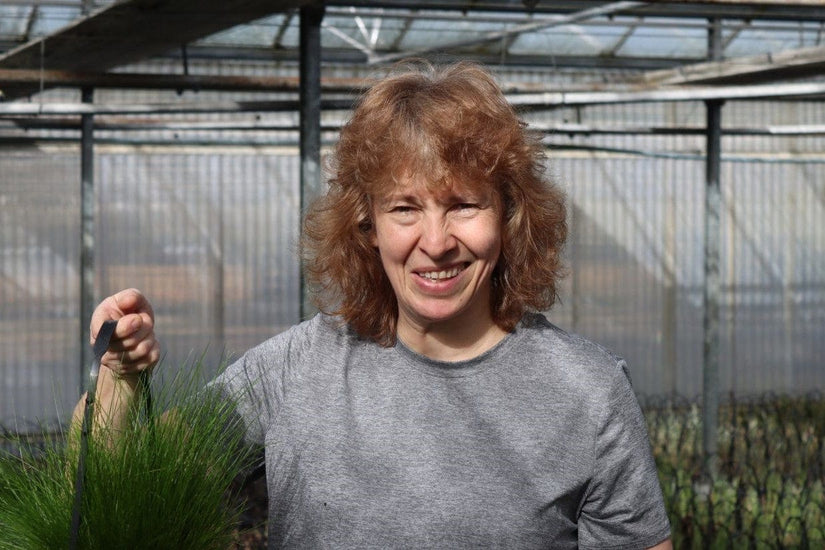
Enfield
Meet Caroline
A deep dive into sustainable gardening
Nestled amongst wildlife meadows and resident ducks, Caroline’s award winning pond plant nursery in Enfield has been making a splash since 1965, when they invented the (recycled, obvs) aquatic basket. Sixty years and multiple RHS gold medals later, they’re still surprising us with new varieties every year!
Need help picking?

Which pond plant is right for you?
The pond plant(s) you choose will depend on your personal preferences and the type of pond you have. With large, sprawling ponds, for instance, an assortment of marginals, submerged plants and floating plants will give you the breadth of variety and structure you’re looking for. A tiny container pond, by contrast, might need nothing more than a single dwarf water lily and one or two oxygenating grasses; with little space, less is often more! We’d encourage the use of oxygenating plants whatever type of pond you have, as these help reduce algal buildup and keep your pond nice and clean.

Pond planting schemes
There are a large number of pond styles you can draw upon when drafting up your pond design. An old porcelain basin or a barrel sawn in half, for instance, can serve as the brilliant basis for a tiny container pond. If you want to give your pond garden that ancient, primal feeling, then planting ferns (from small ground cover plants all the way to big tree ferns) is a must. For a more graceful, Japanese-style pond garden (known as ikeniwa), then Japanese water iris (Iris ensata), Japanese sweet flag (Acorus gramineus) and barred horsetail (Equisetum japonicum) are all good picks. For formal ponds, go hard on the water lilies for their elegant blooms.

Caring for pond plants
Like all plants, pond plants need looking after to make sure they stay happy and healthy. You can break up pond care into the four seasons. In spring, divide plants and replant them, and if flowering is poor, consider a specialist pond feed. Then, in summer, trim away excess growth, deadhead spent (or fading) flowers and consider thinning out any oxygenating plants you have (down to roughly four bunches per m2). Once autumn rolls around, remove dead leaves or other plant matter to keep the surface of the pond nice and clean. Finally, in winter, try to keep your pond from freezing over by keeping the water circulating using a pump; this also ensures higher levels of oxygen within the pond.
Pond Plant FAQs
What plants clean pond water?
There are many plants that help clean pond water, and they can generally be broken down into two main categories: oxygenators and nitrate filterers. Oxygenators are plants that release oxygen into the water and compete with algae for resources, reducing the latter’s presence in the pond as a result. An excess of nitrates in a pond can lead to algal blooms, and while all pond plants filter nitrates out of the water, some are better than others as they’re faster growing and can therefore remove nitrates at a greater rate. Watercress and flag irises are two good examples.
Can you have too many oxygenating plants in a pond?
Yes, you can have too many oxygenating plants in a pond. While oxygenating plants are generally beneficial for a pond, helping to keep it clean and free of algae, too many can actually lead to depleted stocks of oxygen within the water, which can affect wildlife like fish living within the pond. If you see a sudden increase in algae and start smelling an unpleasant odour, your pond may have too little oxygen.
What time of year should I plant my pond?
The best time of year to plant a pond is late spring into early summer. The warmer water conditions at this time of year will give your plants the best chance of establishing. Planting in late autumn, winter or early spring should be avoided, as the water temperatures won’t be conducive to the establishment of new plants.
Should pond plants be fully submerged?
Whether your pond plant should be fully submerged depends on the type of pond plant. Oxygenating pond plants, such as hornwort, for instance, are often grown fully submerged with the help of weights, while other pond plants, like water lilies, grow floating on the pond surface with a rhizome anchoring it beneath the surface.
Can there be too many plants in a pond?
Yes, there can be too many plants in a pond. Too many plants can lead to issues like oxygen depletion, an imbalance of nutrients and too much debris floating around the pond. This, in turn, can result in an overproduction of algae.
How do you plant pond plants?
Fully-submerged plants are often supplied in the form of bunches which can be weighed down to keep them fully submerged within the pond. Other pond plants, like marginals, which are grown at the shallow edges of the pond, typically make use of aquatic baskets. These are baskets with mesh sides, which are filled with aquatic compost/soil, planted up with the aquatic plant, then topped with a layer of aquatic gravel to help weigh it down. These baskets help more vigorous plants from spreading and also help keep plants nice and secure. Check out our guide to pond planting for more information.
Do pond plants need to be in soil?
No, pond plants don’t automatically always need to be planted in soil. Sometimes, they can be planted directly into gravel (or some other inert medium) in an aquatic basket. Heavier feeders, like water lilies, will benefit from being planted in a loamy, aquatic compost. Take care not to use regular compost as this won’t be heavy enough and may have chemicals in it that could leach out into the water.
Happy plants make happy customers
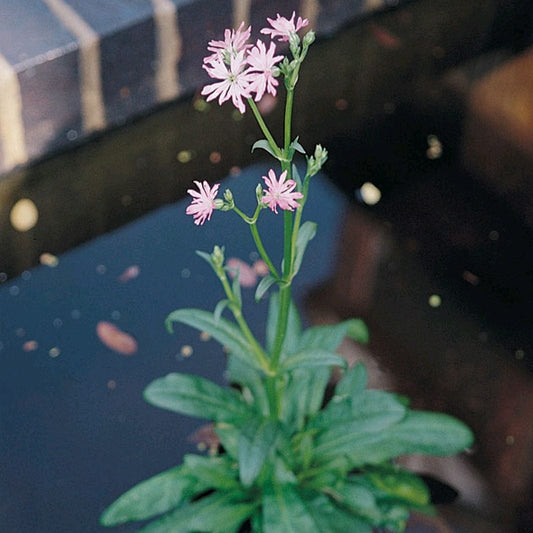
Plants arrived in great condition and very promptly. Well established - much better than the ones I got at my local garden centre.
Monica Spence
| 24 May
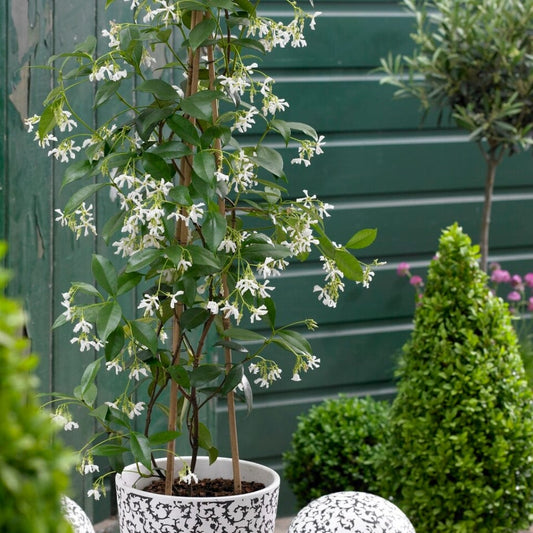
Yet again this company delivered good healthy plants, exactly as shown in photos, well packaged and within delivery time quoted. Recommend!
Jacqueline Burgess
| 2 Jun
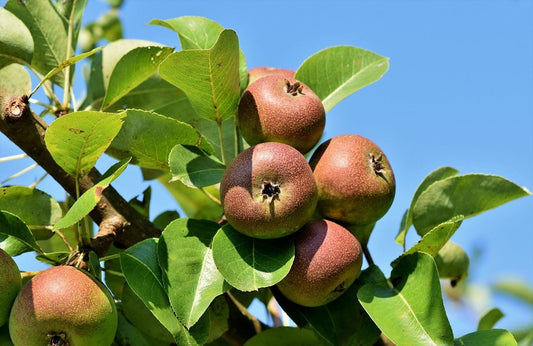
I continue to be so impressed with Roots. Their customer care, knowledge of their subject: from planting hedges to pruning roses and more, has been a great support.
Judy Lane
| 23 Oct
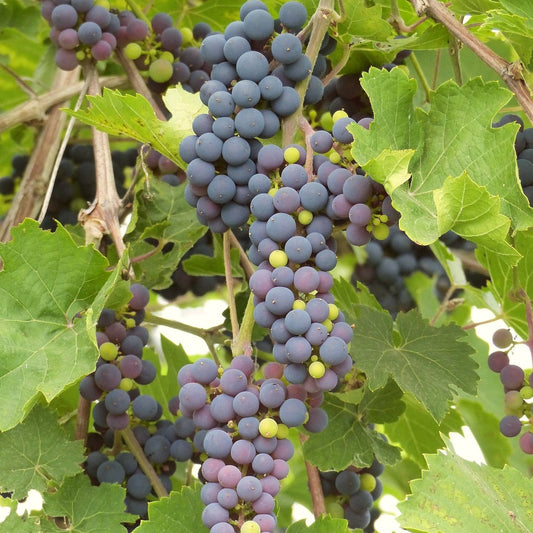
The plant arrived looking vigorously healthy, which brings a smile to your face, extremely well protected in its packaging.
Martyn Hill
| 5 Jul
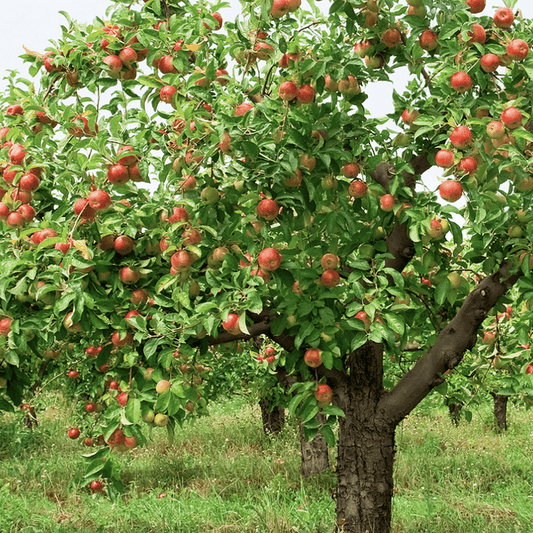
As a non-gardener, I found my whole experience brilliant. Great information & advice available on the website, great range of products & prices are brilliant.
John-Paul
| 22 May

Wonderful plants and great customer service... really surprised to find that the plants are better than those you would get at your local garden centre.
Gavin Wilcock
| 8 Nov
Fighting plastic waste
Delivering fresh from the nursery
Supporting UK growers
